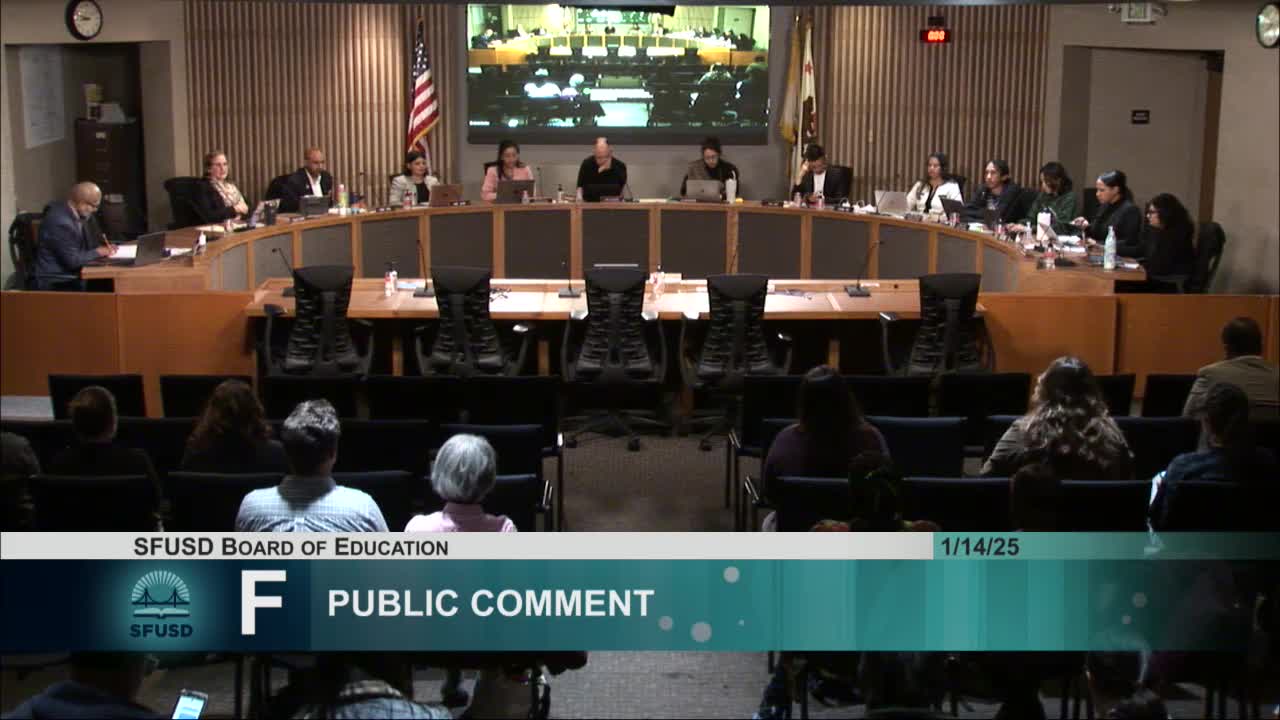Parents criticize SFUSD for hiring new high-salary position amid potential teacher layoffs
January 14, 2025 | San Francisco City, San Francisco County, California
This article was created by AI summarizing key points discussed. AI makes mistakes, so for full details and context, please refer to the video of the full meeting. Please report any errors so we can fix them. Report an error »

In a recent San Francisco Unified School District (SFUSD) meeting, community members voiced their concerns regarding the district's budget decisions and the potential impact on students and educators. The meeting highlighted a growing tension between administrative spending and the need for resources directly benefiting students.
One of the most significant discussions centered around the proposal to create a new high-salaried administrative position, which some parents and educators criticized as unnecessary given the district's current fiscal challenges. Concerns were raised about potential layoffs of teachers and support staff, with one speaker questioning the prioritization of administrative roles over classroom needs. "Every school needs their assistant principal," emphasized Chris Clouse, a special education teacher, who argued that such positions are vital for student support and school operations.
Parents expressed frustration over what they perceive as a lack of transparency and accountability from the district. One parent urged the board to prioritize student needs over administrative expansion, stating, "We need fully staffed schools, not cuts." This sentiment was echoed by others who felt that the district's focus on high-level positions detracts from essential resources for students.
The meeting also touched on broader social issues, including the district's commitment to supporting immigrant families and addressing the needs of marginalized students. Parents called for the board to remain vigilant against potential threats from state policies that could adversely affect these communities.
As the SFUSD navigates its budgetary constraints, the discussions from this meeting underscore the critical need for a balanced approach that prioritizes student outcomes while ensuring fiscal responsibility. The board faces the challenge of addressing community concerns while making difficult decisions about resource allocation. Moving forward, stakeholders will be watching closely to see how the district responds to these pressing issues and whether it can bridge the gap between administrative decisions and the needs of students and families.
One of the most significant discussions centered around the proposal to create a new high-salaried administrative position, which some parents and educators criticized as unnecessary given the district's current fiscal challenges. Concerns were raised about potential layoffs of teachers and support staff, with one speaker questioning the prioritization of administrative roles over classroom needs. "Every school needs their assistant principal," emphasized Chris Clouse, a special education teacher, who argued that such positions are vital for student support and school operations.
Parents expressed frustration over what they perceive as a lack of transparency and accountability from the district. One parent urged the board to prioritize student needs over administrative expansion, stating, "We need fully staffed schools, not cuts." This sentiment was echoed by others who felt that the district's focus on high-level positions detracts from essential resources for students.
The meeting also touched on broader social issues, including the district's commitment to supporting immigrant families and addressing the needs of marginalized students. Parents called for the board to remain vigilant against potential threats from state policies that could adversely affect these communities.
As the SFUSD navigates its budgetary constraints, the discussions from this meeting underscore the critical need for a balanced approach that prioritizes student outcomes while ensuring fiscal responsibility. The board faces the challenge of addressing community concerns while making difficult decisions about resource allocation. Moving forward, stakeholders will be watching closely to see how the district responds to these pressing issues and whether it can bridge the gap between administrative decisions and the needs of students and families.
View full meeting
This article is based on a recent meeting—watch the full video and explore the complete transcript for deeper insights into the discussion.
View full meeting
